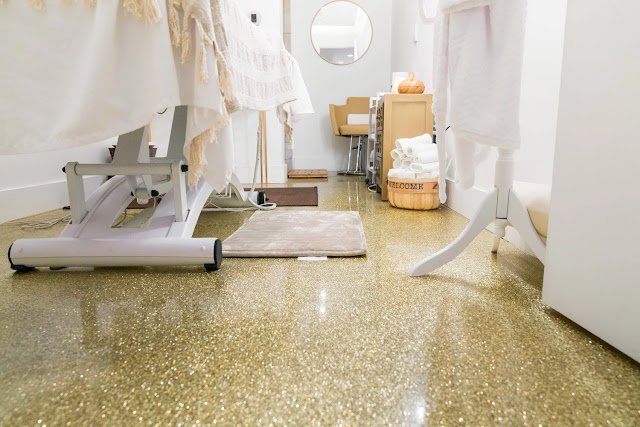Understanding Epoxy Flake Flooring Cost: What You Need to Know
Epoxy flake flooring has become an increasingly popular choice for residential, commercial, and industrial spaces due to its durability, aesthetic appeal, and ease of maintenance. This type of flooring offers a unique blend of functionality and style, making it a versatile option for a wide range of applications. However, before diving into this flooring option, it's crucial to have a clear understanding of the costs involved.
What is Epoxy Flake Flooring?
Epoxy flake flooring, also known as decorative flake flooring or chip flooring, is a seamless, multi-layered flooring system composed of epoxy resin and colored vinyl flakes. The process involves applying a base layer of epoxy resin, broadcasting vinyl flakes over it, and then sealing it with a clear topcoat. This results in a textured, aesthetically pleasing surface that is not only durable but also slip-resistant.
Factors Influencing Epoxy Flake Flooring Cost
Several factors can impact the overall installation of epoxy flake flooring cost. These include:
1. Surface Preparation:
Before applying epoxy flake flooring, the existing surface needs to be properly prepared. This may involve tasks such as cleaning, repairing cracks or imperfections, and ensuring the surface is completely level. The extent of preparation required will influence the overall cost.
2. Square Footage:
The size of the area being covered is a significant determinant of cost. Larger spaces will require more materials and labor, thus increasing the overall expense.
3. Material Quality:
The quality of epoxy resin and vinyl flakes used can vary significantly. Higher-quality materials tend to be more expensive but offer better durability and a more polished finish.
4. Design Complexity:
Incorporating intricate designs, patterns, or multiple colors into the flooring will typically add to the cost. More complex designs may require additional labor and materials.
5. Additional Features:
Optional features like anti-slip additives, UV protection, or chemical resistance can increase the overall cost.
6. Location and Accessibility:
Geographical location can impact the cost due to variations in labor rates and material availability. Additionally, if the installation site is difficult to access, it may require more time and effort, which can affect the cost.
Estimating Epoxy Flake Flooring Costs
While the exact cost can vary widely based on the factors mentioned, here's a general breakdown to provide a rough estimate:
Material Costs: This includes epoxy resin, vinyl flakes, and topcoat. On average, expect to spend between $3 to $7 per square foot for materials.
Labor Costs:
Labor costs can range from $3 to $7 per square foot, depending on factors like surface preparation, design complexity, and location.
Additional Costs:
These may include surface preparation, customization options, and any special features you choose to incorporate.
Conclusion
Epoxy flake flooring is an excellent investment for those seeking a durable, attractive, and low-maintenance flooring solution. While the initial cost may seem significant, the long-term benefits, including its longevity and ease of maintenance, make it a cost-effective choice in the long run.
Before committing to any installation, it's essential to obtain quotes from reputable contractors, ensuring they provide a detailed breakdown of costs. This will help you make an informed decision and ensure you get the best value for your investment.



Comments
Post a Comment